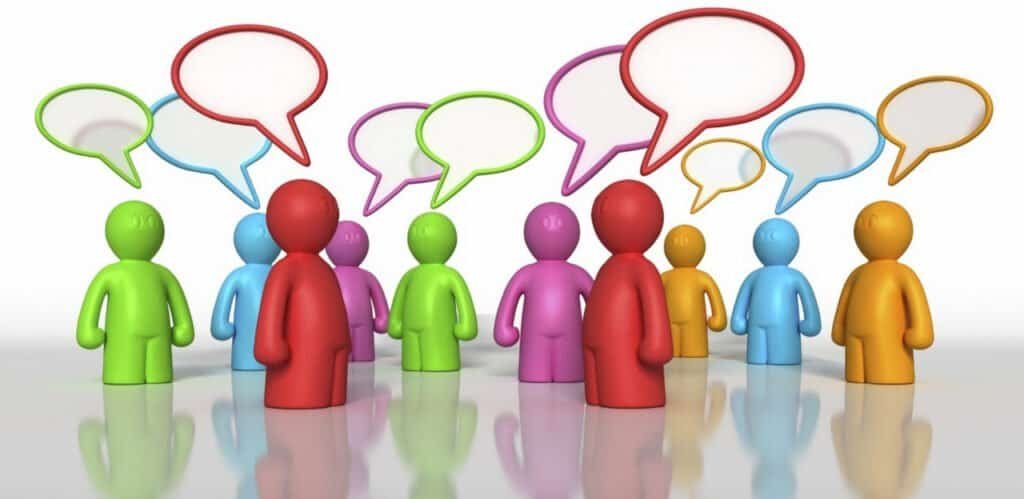Hey man, what’s up! We live in a world with the ever-evolving landscape of social media, and Facebook remains a goldmine for brands seeking to build loyal communities. But here’s a secret not everyone is tapping into: turning your commenters into brand advocates by creating special DM (Direct Message) groups on Facebook. Intrigued? Okay, let’s dive in and explore this advanced strategy that can skyrocket your brand’s engagement and loyalty.
The Untapped Power of Commenters: Transforming Engagement into Advocacy
Commenters are more than just passive followers; they’re individuals who’ve taken the time to interact with your content. Understanding their potential is the first step toward turning them into passionate advocates for your brand.
The Psychology Behind Commenting Behavior
Commenting is a deliberate action that reflects a deeper level of engagement. According to Sprout Social, users who comment are seeking interaction and recognition. They’re expressing interest, asking questions, or sharing opinions—all signs of a vested interest in your brand.
By acknowledging and valuing their input, you tap into the psychological principle of reciprocity. As Robert Cialdini discusses in his work on influence, when you give value to someone, they’re more likely to return the favor. In this case, by becoming advocates who promote your brand organically.
From Commenters to Advocates: The Journey
Turning commenters into advocates isn’t an overnight process. It involves nurturing relationships, providing exclusive value, and fostering a sense of community. Harvard Business Review emphasizes the importance of creating personalized experiences that make customers feel valued and part of something bigger.
By creating special DM groups on Facebook, you provide a platform for deeper interaction, exclusive content, and a sense of belonging—all critical factors in cultivating brand advocacy.

Unlocking the Goldmine: Creating Special DM Groups on Facebook
Creating special DM groups isn’t just about adding people to a chat; it’s a strategic move that requires careful planning and execution.
Understanding Facebook’s Group Messaging Capabilities
Facebook’s Messenger allows for group chats with up to 250 members. While this might seem large, keeping groups more intimate—around 20-50 members—can foster closer connections. According to TechCrunch, smaller groups encourage more meaningful interactions.
Understanding the platform’s features, such as polls, file sharing, and reactions, can enhance engagement within the group. These tools enable you to create interactive experiences that keep members interested and active.
Selecting the Right Commenters for Your DM Groups
Not every commenter is the right fit for your special DM groups. Identify individuals who consistently engage, provide insightful feedback, or show enthusiasm for your brand. Social Media Examiner suggests using social listening tools to track engagement levels and identify potential advocates.
By selectively inviting these individuals, you create an exclusive community that feels valued and special. This exclusivity can heighten their commitment to your brand and increase their likelihood of advocating for you publicly.
Crafting Personalized Invitations
The way you invite commenters to your DM group sets the tone for their participation. Personalized messages that acknowledge their contributions can make them feel appreciated. For example:
“Hey [Name], we’ve noticed your awesome contributions to our posts and would love to invite you to join our exclusive group of brand enthusiasts!”
HubSpot highlights that personalization can significantly enhance customer experience and foster loyalty.
Nurturing Your DM Groups: Strategies for Engagement and Advocacy
Once your DM group is established, the real work begins. Nurturing these groups requires consistent effort and strategic planning.
Providing Exclusive Value
Offer group members something they can’t get elsewhere. This could be early access to new products, behind-the-scenes content, or exclusive discounts. Neil Patel emphasizes that exclusive offers can increase customer loyalty and encourage advocacy.
By delivering unique value, you reinforce the idea that membership in the group is special, motivating members to remain active and engaged.
Facilitating Meaningful Conversations
Encourage open dialogue by asking questions, soliciting feedback, and sparking discussions relevant to your brand and industry. According to Buffer, facilitating conversations rather than dominating them empowers members and fosters a stronger community.
For instance, you might ask:
“What features would you love to see in our next product release?”
Such questions not only engage members but also provide valuable insights for your brand.
Recognizing and Rewarding Advocacy
Acknowledge members who actively promote your brand outside the group. Public recognition within the group can motivate others to follow suit. Consider implementing a rewards system for advocacy efforts, such as exclusive merchandise or additional discounts.
Forbes notes that recognizing and rewarding advocates can amplify their efforts and strengthen their connection to your brand.
Leveraging Technology and Tools for Effective Management
Managing special DM groups can be resource-intensive, but the right tools and technologies can streamline the process.
Utilizing Facebook’s Group Insights
While primarily available for Facebook Groups, certain insights can be adapted for DM groups. Tracking engagement levels, active times, and popular topics can inform your content strategy within the group. Facebook Business provides resources on understanding and leveraging these insights.
Integrating Chatbots for Scale
For larger groups, integrating chatbots can help manage routine interactions without sacrificing personalization. ManyChat and Chatfuel offer chatbot solutions that can handle FAQs, deliver content, and even personalize interactions based on user data.
However, it’s crucial to balance automation with human touch to maintain authenticity. Sprout Social advises that chatbots should enhance, not replace, human interaction.

Measuring Success: KPIs and Analytics
Understanding the impact of your DM groups requires tracking key performance indicators (KPIs) and analyzing engagement data.
Engagement Metrics
Monitor metrics such as message frequency, response times, and active participation rates. High engagement levels indicate a healthy, active group. Hootsuite provides insights into measuring social media engagement effectively.
Advocacy Indicators
Track how group members promote your brand outside the group. This could include social media mentions, referrals, or user-generated content. Tools like Brandwatch can help monitor brand mentions and analyze sentiment.
By correlating group activity with advocacy efforts, you can assess the effectiveness of your strategies and make data-driven adjustments.
Case Studies: Brands Turning Commenters into Advocates
Learning from successful brands can provide actionable insights for your strategy.
Lego’s Ambassador Network
Lego has created a community of brand advocates through their Ambassador Network. By engaging directly with passionate fans, offering exclusive content, and involving them in product development, Lego has cultivated a loyal community that actively promotes the brand. Harvard Business Review discusses how this approach has contributed to Lego’s success.
Sephora’s Beauty Insider Community
Sephora leverages special groups to engage with their most passionate customers. By providing exclusive access to products, personalized recommendations, and a platform to share experiences, Sephora has turned customers into advocates who drive word-of-mouth marketing. Forbes highlights how this strategy has strengthened customer loyalty.
Overcoming Challenges in Managing DM Groups
While the benefits are significant, managing special DM groups isn’t without challenges.
Maintaining Engagement Over Time
Keeping members engaged requires consistent effort and fresh content. Stagnation can lead to disengagement. Regularly introducing new topics, activities, or incentives can keep the group dynamic. Social Media Today offers tips on sustaining engagement.
Balancing Personalization and Scalability
As your group grows, maintaining personalized interactions becomes more challenging. Leveraging technology without compromising authenticity is key. Chatbots Magazine discusses strategies for balancing automation with a human touch.

Ethical Considerations and Best Practices
Ethical engagement is crucial for building trust and long-term relationships.
Respecting Privacy and Consent
Ensure that you’re compliant with privacy laws such as GDPR. Obtain explicit consent before adding individuals to groups and handling their data. EU GDPR provides guidelines on data protection and privacy.
Transparency and Honesty
Be transparent about the purpose of the group and how you intend to interact with members. Honesty builds trust and fosters a positive community environment. Ethical Marketing is essential for maintaining brand integrity.
Conclusion
Turning commenters into advocates by creating special DM groups on Facebook is a powerful strategy that goes beyond traditional engagement tactics. By understanding the psychology of your audience, providing exclusive value, and fostering a sense of community, you can transform casual commenters into passionate advocates who amplify your brand’s reach.
Remember, this isn’t a set-it-and-forget-it strategy. It requires ongoing effort, genuine interaction, and a commitment to your community’s well-being. But the rewards—loyal advocates who champion your brand—are well worth it. Ready to unlock this goldmine? Let’s start building those DM groups and watch your brand advocacy soar!
FAQs
How do I select the right commenters to invite to my special DM groups? Identifying the right commenters involves analyzing engagement metrics and behaviors. Look for individuals who consistently interact with your content, provide insightful comments, or show enthusiasm for your brand. Tools like Sprout Social can help track engagement levels. By selecting those who are already invested, you’re more likely to cultivate passionate advocates.
What if my DM group becomes too large to manage effectively? If your group grows beyond a manageable size, consider creating subgroups or assigning community managers to assist. Leveraging chatbots for routine interactions can also help, but ensure you maintain a balance between automation and personalization. Hootsuite offers solutions for scaling social media management while preserving authenticity.
How can I measure the effectiveness of my DM groups in driving advocacy? Measuring effectiveness involves tracking both engagement within the group and advocacy efforts outside of it. Monitor metrics like active participation rates, message frequency, and content sharing. Use social listening tools like Brandwatch to track brand mentions and referrals. Analyzing these metrics will provide insights into how your DM groups contribute to overall brand advocacy.

